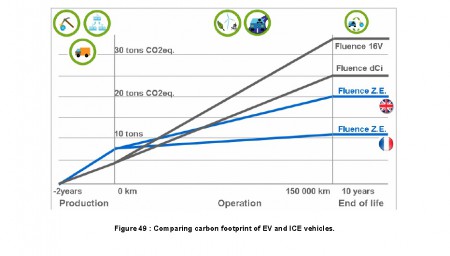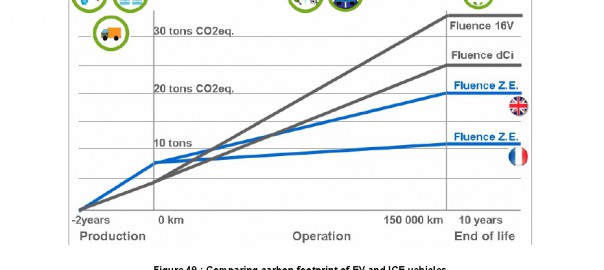Renault Fluence ZE Vs Diesel, Gas Models

The environmental impact of plug-in electric cars is a source for much debate these days. They use less energy on a wells-to-wheels carbon basis than the vast majority of new cars sold in North America, even if they’re recharged on coal-heavy electric grids.
But the manufacturing impact is greater–and the degree to which that is the case has been hotly debated for several years now. Proper life-cycle analyses of electric cars are hard to do, and expensive.
They require a great deal of careful investigation into the sources of the materials, the transportation of the raw materials and parts before they reach the assembly plant, and then the carbon impact of that assembly process.
Now, however, thanks to a tip from a reader, we’ve got a nice model of a comprehensive lifecycle analysis that compares the electric version of a car to its non-electric counterpart.
The car is the Renault Fluence ZE, the electric conversion of a French compact sedan not sold in North America. That analysis, titled “Fluence and Fluence ZE: Life Cycle Assessment” (PDF) is now three years old, but it remains an excellent model for looking at gasoline versus electric propulsion.
The Fluence ZE was developed specifically for the now-defunct Better Place project in Israel, which proposed to sell electric transportation by the kilometer, just as mobile-phone service is sold by the minute. That project collapsed into bankruptcy for a number of reasons, and the Fluence ZE is essentially a defunct model – although it lived on for a while longer in Korea as a Samsung vehicle.
But the analysis done by Renault concludes that the Fluence ZE has lower lifetime carbon emissions than either a diesel or a gasoline Fluence, not only on the French grid (which is substantially nuclear) but also the coal-heavy U.K. grid.
While the Fluence ZE is now gone, its legacy lives on in the form of an analysis – one that other automakers would do well to emulate.
Source: Green Car Reports
